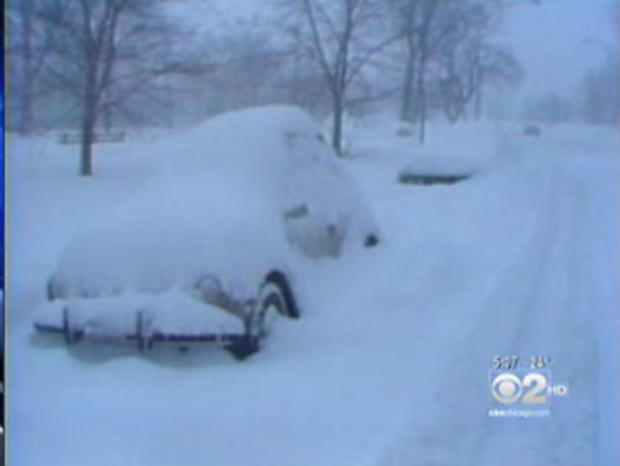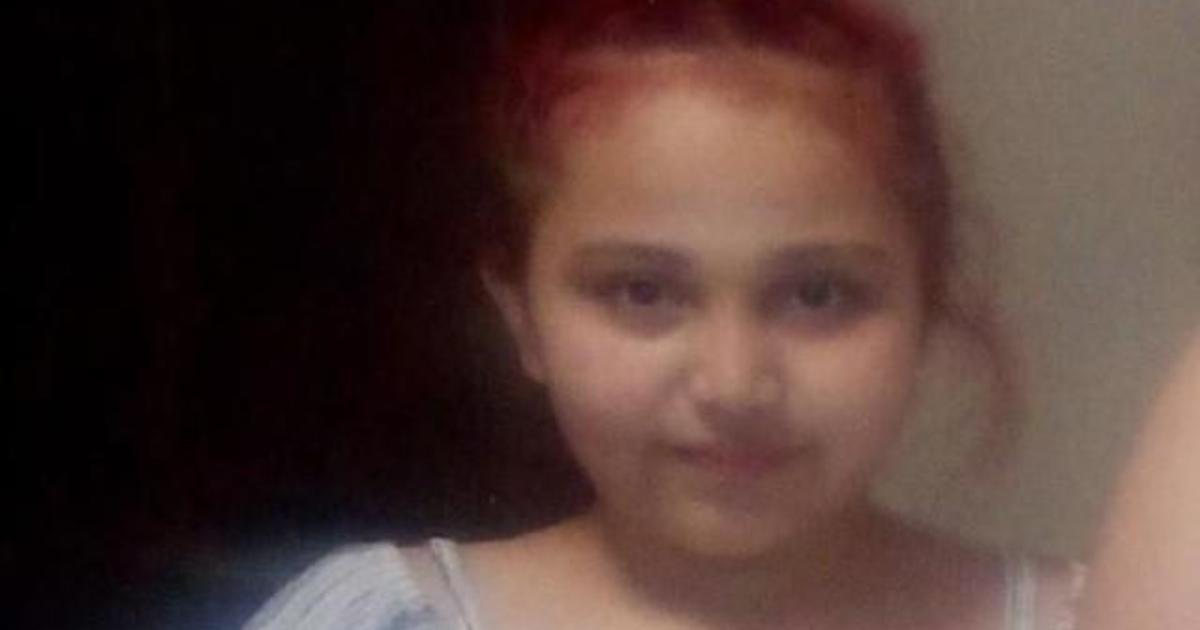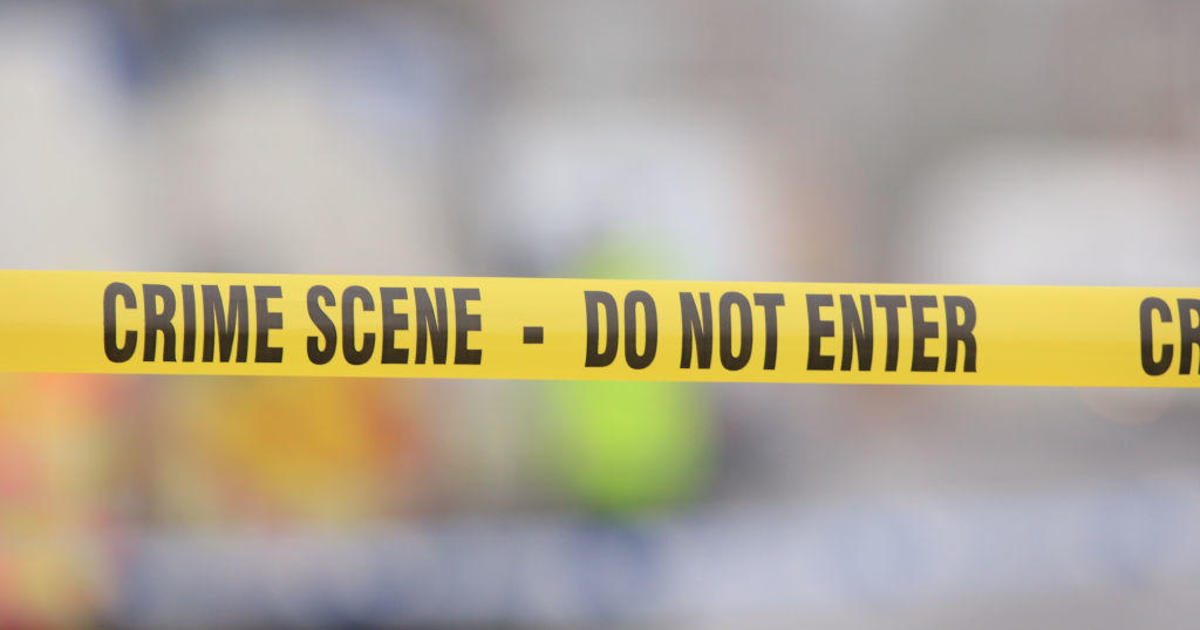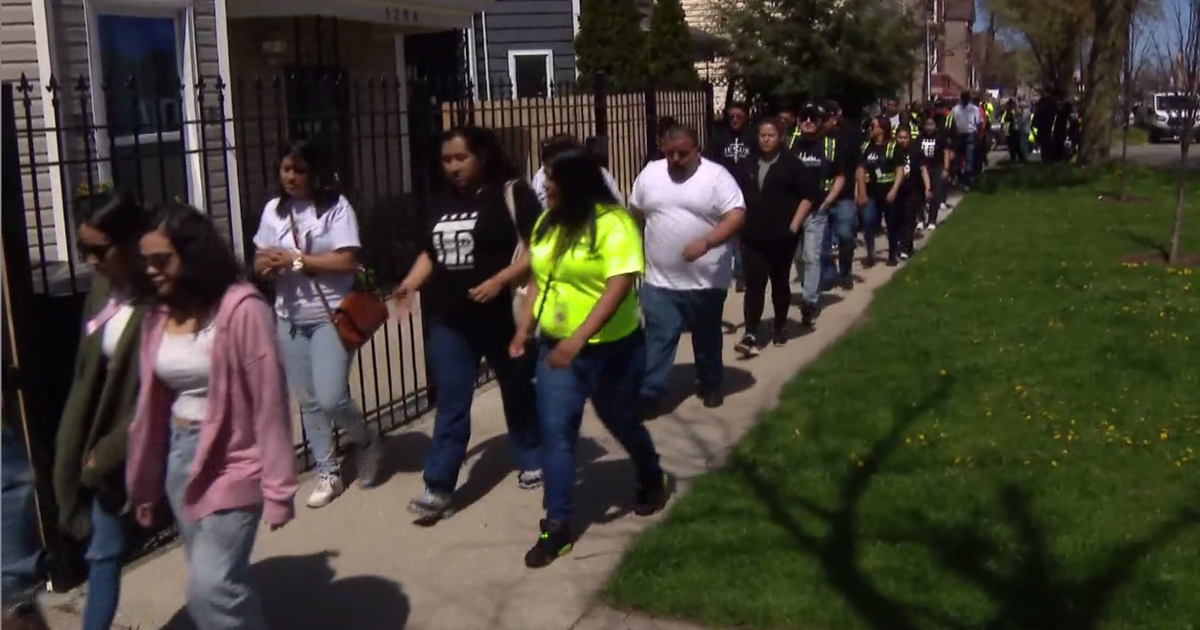A Look Back At 3 Of Chicago's Worst Blizzards
CHICAGO (CBS) -- As Chicago prepares for a blizzard that could leave more than 18 inches of snow in some areas, the inevitable comparisons are being drawn to some of the city's most notorious snowstorms in past years.
Here is a look back at three particularly memorable blizzards of the past 50 years.
Jan. 26-27, 1967
Mayor Richard J. Daley was finishing his third term in office. The Prudential Building was still the city's tallest, with the John Hancock Center still under construction. Rush Street was the place to see and be seen, Old Town was teeming with hippies and folkies, and the Union Stockyards were still bringing their familiar stench to much of the South Side.
And the city was clobbered with a snowstorm that to this day is the largest in the city's history.
HISTORY: The 10 Worst Snowstorms In Chicago
Two days earlier, the temperature had hit a record 65 degrees. The forecast for the day called only or a modest amount of snow.
But starting in the early morning hours on Jan. 26, the blizzard began dumping snow at a rate of 2 inches per hour. Wind gusted to 53 mph, as snow drifted 6 feet in some areas. When it was all over, there were 23 inches of snow on the ground.
Thousands of people spent the night in hotels, hospitals and fire stations. There were thousands of cars, trucks and CTA buses abandoned and left in the snowbound streets and on the expressways.
More snow fell over the next 10 days, grinding cars, buses and air traffic to a halt.
"I was almost 10 years old when this happened, and I can remember buses and cars stranded on Lake Shore Drive. People were walking in the middle of busy streets," CBS 2's Jim Williams said back in 2007. "I have never seen a snowstorm like this."
Some of the estimated 75 million tons of snow was sent south to Florida by rail, for children who had never seen snow, according to the Chicago Public Library.
Sixty deaths were attributed to the storm – mostly heart attacks caused by shoveling snow – but one young girl was accidentally shot and killed by police who were trying to take down looters, according to the Chicago Public Library. A total of 273 looters were arrested.
Jan. 13-14, 1979
Disco was playing up and down the radio dial. The Art Institute of Chicago was celebrating its 100th anniversary. At 10 o'clock, Chicagoans were tuning into Bill and Walter on Channel 2.
Today, the snowstorm that struck Chicago those January days is best remembered for costing Mayor Michael Bilandic his bid for re-election.
Between 7 and 10 inches of snow were already on the ground, after an earlier blizzard the previous New Year's Eve. More snow began to fall with a vengeance on the night of Jan. 12, and it kept piling up until 2 a.m. on Sunday, Jan. 14.
The new snowstorm alone topped out with 18.8 inches on the ground.
Motorists found themselves snowed in, and transportation was rendered impossible. Chicagoans fought over parking spaces, and so many pieces of furniture were put out to reserve freshly-dug spots that resale merchants began prowling the streets for them.
The snow also damaged brakes and motors on CTA 'L' trains, leaving many train cars disabled as otherwise-stranded Chicagoans crammed into the ones that were left. Transportation came to a standstill all around the city.
The snowstorm was even powerful enough to destroy buildings. On Fullerton Avenue near DePaul University, the Lakeshore Racquet Club was destroyed and had to be rebuilt from scratch.
But it was the aftermath that angered Chicagoans most. Snow wasn't being cleared, garbage was piling up, and days after the snowstorm, transportation remained anemic. Some people's cars were stuck in the snow for the rest of the winter.
As frustration mounted, Chicagoans placed the blame squarely on Mayor Bilandic's administration. Chicagoans from every part of the city charged him with failing to keep the streets plowed. In particular, the Chicago Sun-Times recalled, African-American leaders were infuriated that express 'L' trains were bypassing West Side neighborhoods as they headed from downtown to the western suburbs during the snowstorm.
Columnist Mike Royko, then with the Sun-Times, remarked that city crews didn't have a clue about dealing with snow, because their skills revolved around cranking out votes on Election Day.
As the criticism swelled, Bilandic was contrite.
"We all learn from our mistakes. I've made them, and I freely admit it," he said in a 1979 news conference.
But that wasn't enough.
In the mayoral primary the following month, challenger Jane Byrne focused on the snowstorm as she campaigned against Bilandic. She even taped a commercial with snowflakes falling around her, the Tribune recalled.
Byrne went on to win the 1979 primary in a landslide, and won the general election in April. She served one term before being ousted by Harold Washington in 1983.
Jan. 1-3, 1999
You could still rent VHS tapes at your local Blockbuster Video. The CD Walkman and the Palm Pilot were likely your favorite electronic accessories. Michael Jordan's run with the Bulls had ended, and Chicagoans had turned their adoration toward Sammy Sosa and the Cubs. Mayor Richard M. Daley was preparing to coast to another landslide victory for a fourth term in office, despite a strong challenge from U.S. Rep. Bobby Rush.
And on New Year's weekend, the city was socked with a snowstorm that left 21.6 inches on the ground over its two-day wrath. On Saturday, Jan. 2, alone, it dumped 18.6 inches of snow on the ground –- the greatest single-day snowfall ever recorded in Chicago.
Winds gusted at more than 60 mph, creating an eerie scene of shadows struggling through a cloud of whipping snow. Trees rocked, flags whipped, dumpsters were toppled, and those who dared to enter out were slapped and pelted in the face.
CTA buses and 'L' trains ran normally, but with severe delays. Lake Shore Drive was shut down altogether for the first time in history, and Interstate 65 in Northwest Indiana was also closed.
School was supposed to resume after winter break that Monday, but as arctic cold followed the snow, opening the city's schools proved impossible.
Chicago Public Schools and Roman Catholic schools shut down on both Monday, Jan. 4, and Tuesday, Jan. 5. Even if students had wanted to go to school, in many neighborhoods they would have had a hard time getting to the front door with all the snow piled up.
Many colleges and universities resumed classes as usual, but lecture halls were hardly filled to capacity. At the University of Chicago, some dormitory resident heads said less than half of their students had returned, the student newspaper the Chicago Weekly News reported on Jan. 7, 1999.
In the Chicago area, the snowstorm was blamed for at least 43 deaths, from heart attacks while shoveling snow, exposure to cold, and other factors.






